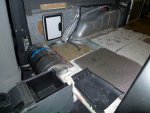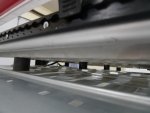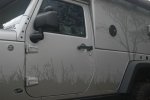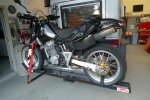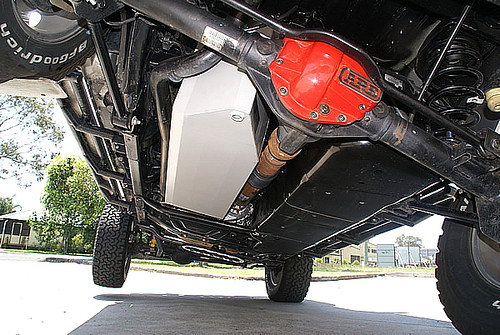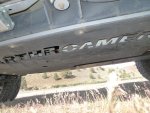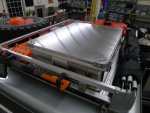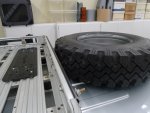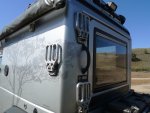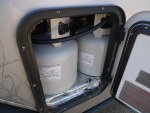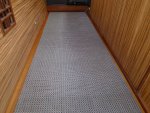mhiscox
Exp. Leader Emeritus
About a month ago, I went to a Sprinter builder's thread on another forum when I wanted to get a quick look at the work he had done. It was a great build, but he was one of those guys that showed all of the gory details of how everything went together, so it took quite a while to figure out what the finished product actually looked like and why.
And that was the point at which it struck me that our main XV-JP thread has the same problem. It was moving along OK for a while, but then we, quite correctly I think, got into the specifics of how things were built and why they were done a certain way. The result was that there are now nearly 700 posts to wade through on the main thread, and if someone just wants to know a little something about what's going on, there's too much detail.
So I'm going to do a summary build thread that sort of cuts to the chase about how the EarthRoamer XV-JP got turned into our one-off, self-contained Wrangler motorhome. Before beginning, however, here's where to go to get all of the rest of the relevant information:
The big thread is here; it discusses pretty much everything about the truck and why it got modified the way it did:
http://www.expeditionportal.com/forum/threads/51254
But there are near two dozen threads around the Portal that reference the XV-JP, and they may, depending on your interest, be worth a look. Some of the principal ones are:
-- EarthRoamer announces the XV-JP and we all get excited: http://www.expeditionportal.com/forum/threads/3838.

-- The XV-JP does the Rubicon: http://www.expeditionportal.com/forum/threads/7694 (and an ExPo video here: http://www.expeditionportal.com/component/content/article/41-w/1847).

-- Scott Brady buys, builds, tests and uses an XV-JP: http://www.expeditionportal.com/forum/threads/13788 and http://www.expeditionportal.com/forum/threads/14395,

-- and Scott drives his through Central America to Panama: http://www.expeditionportal.com/forum/threads/23639.
.jpg)
Then I buy this 2007 XV-JP, the third one made, off of eBay in the fall of 2008:
-- And I get a skillful driver to fetch it for me and drive it through the Rockies and take cool photos: http://www.expeditionportal.com/forum/threads/19489.

-- And, after we finished it, Paul Jensen gave it a test drive around the Northwest, taking really nice photos as he went: http://www.expeditionportal.com/forum/threads/76018
.JPG)
It'll take a few days to post up all of the information. If anything that gets posted produces a question, don't hesitate to ask.
And that was the point at which it struck me that our main XV-JP thread has the same problem. It was moving along OK for a while, but then we, quite correctly I think, got into the specifics of how things were built and why they were done a certain way. The result was that there are now nearly 700 posts to wade through on the main thread, and if someone just wants to know a little something about what's going on, there's too much detail.
So I'm going to do a summary build thread that sort of cuts to the chase about how the EarthRoamer XV-JP got turned into our one-off, self-contained Wrangler motorhome. Before beginning, however, here's where to go to get all of the rest of the relevant information:
The big thread is here; it discusses pretty much everything about the truck and why it got modified the way it did:
http://www.expeditionportal.com/forum/threads/51254
But there are near two dozen threads around the Portal that reference the XV-JP, and they may, depending on your interest, be worth a look. Some of the principal ones are:
-- EarthRoamer announces the XV-JP and we all get excited: http://www.expeditionportal.com/forum/threads/3838.

-- The XV-JP does the Rubicon: http://www.expeditionportal.com/forum/threads/7694 (and an ExPo video here: http://www.expeditionportal.com/component/content/article/41-w/1847).
-- Scott Brady buys, builds, tests and uses an XV-JP: http://www.expeditionportal.com/forum/threads/13788 and http://www.expeditionportal.com/forum/threads/14395,

-- and Scott drives his through Central America to Panama: http://www.expeditionportal.com/forum/threads/23639.
.jpg)
Then I buy this 2007 XV-JP, the third one made, off of eBay in the fall of 2008:
-- And I get a skillful driver to fetch it for me and drive it through the Rockies and take cool photos: http://www.expeditionportal.com/forum/threads/19489.

-- And, after we finished it, Paul Jensen gave it a test drive around the Northwest, taking really nice photos as he went: http://www.expeditionportal.com/forum/threads/76018
It'll take a few days to post up all of the information. If anything that gets posted produces a question, don't hesitate to ask.
Last edited:





